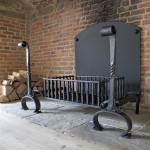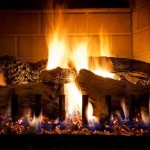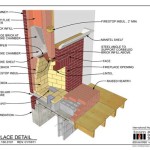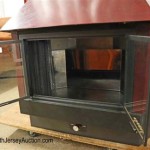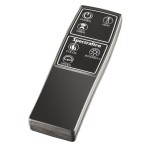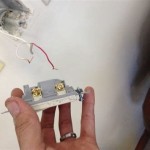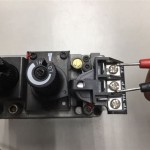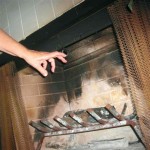Outdoor Fireplaces For Wood Decks: Considerations and Options
The allure of an outdoor fireplace on a wood deck is undeniable. It offers a focal point for gatherings, extending the usability of the outdoor space into cooler months and providing a cozy ambiance. However, integrating a heat source with a combustible surface requires careful planning and adherence to safety precautions. This article will explore critical considerations, available options, and best practices for successfully installing an outdoor fireplace on a wood deck.
Selecting the right type of fireplace is paramount. The compatibility of the fireplace with the deck's structure and the surrounding environment must be thoroughly evaluated. Understanding local building codes, fire safety regulations, and manufacturer guidelines is essential for a safe and compliant installation. Neglecting these initial steps can lead to hazardous conditions, property damage, and potential legal ramifications.
Safety First: Essential Preparations for Wood Decks
Prioritizing safety is the cornerstone of any outdoor fireplace installation on a wood deck. Wood, being a combustible material, necessitates stringent measures to mitigate fire risks. These measures are not mere suggestions; they are crucial elements that protect lives and property.
One fundamental step is creating a non-combustible barrier between the fireplace and the wood deck. This barrier typically involves installing a pad made of concrete, pavers, or specially designed heat-resistant materials. The size of the pad must extend beyond the footprint of the fireplace, providing adequate protection from embers and radiated heat. The manufacturer's instructions for the specific fireplace model should be consulted to determine the precise dimensions and material specifications for the protective pad.
Adequate clearance from combustible materials is another critical safety measure. Maintaining a safe distance between the fireplace and any flammable objects, such as railings, furniture, and overhanging structures, is essential. Building codes often stipulate minimum clearance distances, which should be strictly adhered to. The distance will vary depending on the fireplace type and its heat output, so consulting local regulations is vital.
Regular maintenance of the fireplace is also crucial for safety. This includes cleaning the firebox to remove accumulated ash and debris, inspecting the chimney or venting system for obstructions, and checking for any signs of damage or deterioration. A malfunctioning fireplace can pose a significant fire hazard, so addressing any issues promptly is vital.
The placement of the fireplace on the deck should also be carefully considered. Avoid placing it near areas with high foot traffic or in locations where it could be easily tipped over. A stable, level surface is essential to prevent accidents. Furthermore, ensure that the fireplace is positioned away from prevailing winds, which can carry embers and potentially ignite nearby combustible materials.
Finally, having appropriate fire extinguishing equipment readily available is non-negotiable. This includes a fire extinguisher that is rated for Class A, B, and C fires, as well as a water hose that can reach the fireplace area. Ensure that everyone who uses the fireplace knows how to operate the fire extinguisher and is aware of the emergency procedures in case of a fire.
Choosing the Right Type of Outdoor Fireplace
The selection of an outdoor fireplace is a pivotal decision influenced by factors such as deck size, budget, aesthetic preferences, and heating requirements. Several options are available, each with its unique advantages and disadvantages.
Prefabricated Fireplaces: These are typically made of metal or concrete and are designed for relatively easy installation. They offer a range of styles and sizes and are generally more affordable than custom-built options. Prefabricated fireplaces are often designed with safety features, such as spark arrestors and insulated fireboxes. However, they may lack the customization options of a custom-built fireplace.
Fire Pits: While technically not fireplaces, fire pits offer a similar ambiance and can be a viable option for smaller decks. Fire pits are typically circular or square structures made of metal or stone. Wood-burning fire pits require a non-combustible base and adequate clearance from combustible materials. Propane or natural gas fire pits are often a safer option for wood decks, as they produce less smoke and embers.
Chiminea: Originating from Mexico, chimineas are freestanding clay or metal fireplaces with a bulbous shape and a chimney. They are relatively lightweight and portable, making them a good option for smaller decks. Chimineas direct smoke upwards, reducing the risk of it blowing into your face or your neighbors' yards. However, they may not provide as much heat as a larger fireplace.
Custom-Built Fireplaces: For those seeking a truly unique and personalized outdoor fireplace, a custom-built option is the ideal choice. Custom-built fireplaces can be designed to perfectly complement the deck's architecture and the surrounding landscape. However, they are typically more expensive and require more time and effort to install. A qualified contractor should always be consulted for custom-built fireplace installations to ensure safety and compliance with building codes.
When selecting a fireplace, it is crucial to consider its fuel source. Wood-burning fireplaces offer a traditional and authentic feel, but they produce smoke and embers, which can be a concern on a wood deck. Propane or natural gas fireplaces are cleaner-burning and easier to operate, but they require a gas line connection, which can add to the installation cost.
The size of the fireplace should also be proportionate to the size of the deck. A large fireplace on a small deck can feel overwhelming, while a small fireplace on a large deck may not provide enough heat. Consider the number of people who will typically be using the fireplace and choose a size that is appropriate for your needs.
Installation Best Practices and Ongoing Maintenance
Proper installation is critical to the longevity and safety of an outdoor fireplace. Adhering to manufacturer instructions and local building codes is paramount. Improper installation can void warranties, create safety hazards, and lead to costly repairs.
It's highly recommended to hire a qualified contractor to handle the installation. Contractors possess the experience and expertise to ensure that the fireplace is installed correctly and safely. They can also provide guidance on selecting the appropriate fireplace for your deck and help you navigate the permitting process.
Before beginning the installation, obtain all necessary permits from your local building department. Permits ensure that the installation meets all applicable codes and regulations. Installing a fireplace without a permit can result in fines and require you to remove the fireplace altogether.
Ensure that the deck's structure is strong enough to support the weight of the fireplace. Decks are typically designed to support a certain amount of weight per square foot. If the fireplace is too heavy, it could compromise the structural integrity of the deck. A structural engineer can assess the deck's load-bearing capacity and recommend any necessary reinforcements.
After the fireplace is installed, conduct a thorough inspection to ensure that all connections are secure and that there are no leaks or other issues. Test the fireplace to ensure that it is functioning properly and that the venting system is working effectively.
Ongoing maintenance is essential to keep the fireplace in good working order and to prevent safety hazards. Regularly clean the firebox to remove ash and debris. Inspect the chimney or venting system for obstructions and clean it as needed. Check for any signs of damage or deterioration and address any issues promptly.
When using the fireplace, always keep a close eye on the fire and never leave it unattended. Use a spark screen to prevent embers from escaping and igniting nearby combustible materials. Be aware of wind conditions and avoid using the fireplace on windy days. Store firewood or propane tanks safely away from the fireplace.
Consider installing a carbon monoxide detector near the deck area to provide an early warning in case of a carbon monoxide leak. Carbon monoxide is a colorless, odorless gas that can be deadly. A carbon monoxide detector can help protect you and your family from this hazard.
By following these best practices and adhering to manufacturer instructions and local building codes, homeowners can safely and enjoyably integrate an outdoor fireplace into their wood deck, creating a warm and inviting outdoor living space.

Covered Deck With Fireplace How To Make One 2024

25 Outdoor Fireplace Ideas Fireplaces Fire Pits

How To Safely Use A Fire Pit On Deck Expert Tips

Deck Fireplace Ideas And Options

Can You Have An Outdoor Fireplace On A Deck

Can I Put A Fire Pit On My Wood Deck Woodlanddirect Com

30 Outdoor Fireplace Ideas Cozy Fireplaces

30 Outdoor Fireplace Ideas Cozy Fireplaces

75 Backyard Deck With A Fireplace Ideas You Ll Love January 2024 Houzz

Modern Outdoor Fireplaces And Fire Pits That You D Be Proud To Have In Your Backyard
Related Posts

